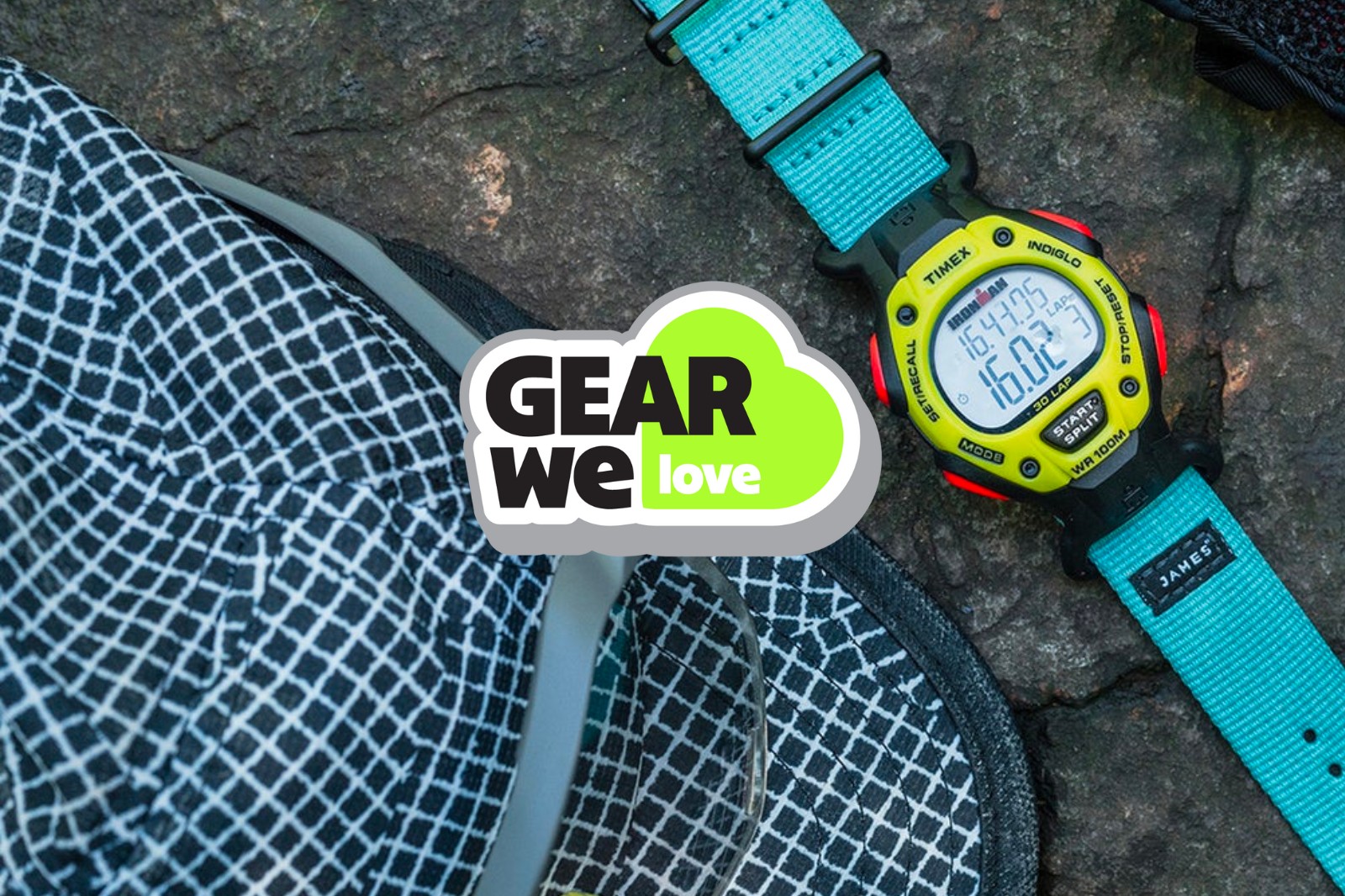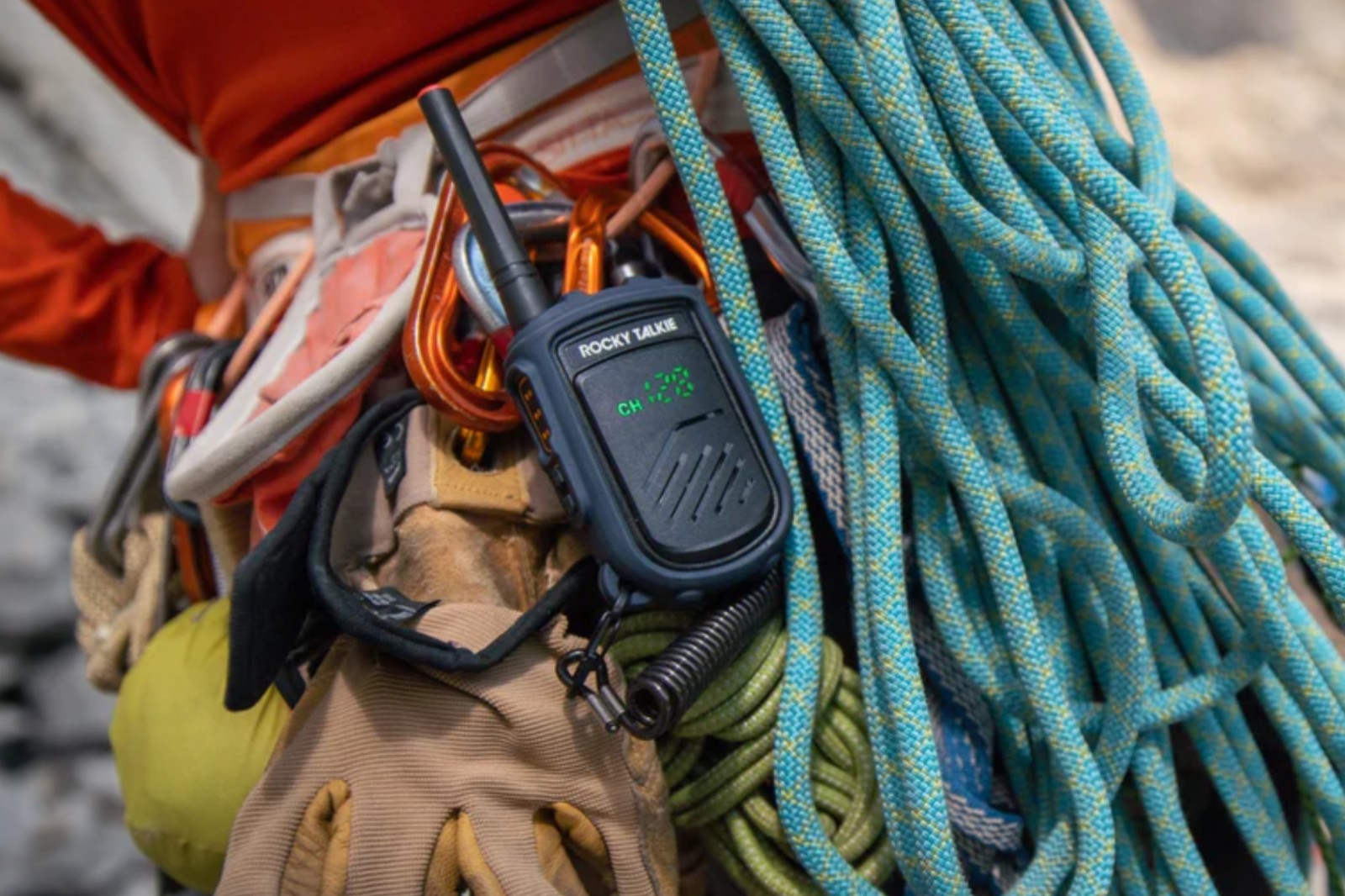
We independently review everything we recommend. When you buy through our links, we may earn a commission.
Up to 35 miles
Up to 4 days
$110 per radio
TAYLOR: We don’t often think of it as so, but running can be a dangerous sport. Some of us can’t even make it down the street without blowing out a body part, while others launch themselves deep into the woods without a care in the world. I’m one of the latter. Whether you’re staying in the neighborhood or tagging a peak, there’s a (hopefully) conscious understanding that something may go awry. It’s an optimistic gamble every time.
As a husband and a dad who has had a couple of backcountry mishaps, I’ve become a little more sensitive to the inherent dangers of running. For example, my most recent incident was a broken foot on the trails. Everything was going fine. The sun was setting. The air was cooling. Then, snap! Now the rugged and beautiful landscape became a concern rather than a comfort.
I had run nine miles at this point, and there was at least 5k to the closest trailhead that was still going to be void of people by this time. That’s not even where my car was parked. Even worse, it was at least another mile up a steep gravel road beyond the trailhead where I would maybe get service. All I could do was attempt to hike myself out of there.
TAYLOR: Where was my Garmin Inreach, you ask? It was cozy in its box at home because I hadn’t forked over the cash for a subscription yet. It’s no real excuse, but that’s the most common barrier to most outdoorsfolk from using a safety service. How much does that help? None.
This is one of the great selling points of Rocky Talkie Mountain Radio. There is no subscription needed for its full range of use. At a fraction of the cost of other license-required safety mechanisms, it becomes a top-of-the-list option because it is likely the one I would use on a regular basis. In my previously mentioned scenario, Rocky Talkies would have been a perfect tool to have when I split from a group of runners I was with.

TAYLOR: My Rocky Talkie Mountain Radios have been put through the wringer at my household. So far, they’ve survived camping trips, numerous runs and hikes, as well as a couple of children chucking them around. These things are ready for any adventure you want to go on.
They’re built to take a beating and keep on ticking with a thermoplastic covering to keep the radio safe from big bumps and drops. Each Rocky Talkie has a screen that shows the channel number and battery life, too. The screen is what I was initially worried about, but it turns out that it’s actually shatterproof. Though it’s not submersible, the Mountain Radio has an IP56 rating, which means it’s splashproof, snowproof, and compatible with a waterproof hand mic to keep it out of harm’s way if desired.
A huge temperature range of -20 to 120 degrees ensures use in any conditions.
The radio is built to function at a wide range of temperatures, too, from -20 degrees Fahrenheit up to 120 degrees. Since the Rocky Talkie Mountain Radio is so lightweight (6.1 oz by itself, 7.9 oz with a leash), it was easy to store up front on my running vest or hiking pack. It’s actually the same weight as my modern smartphone with an Otterbox case. It felt no different from having my phone in my front pack pocket. The Mountain Radio slid into my running waist belt without an issue too.
Added security from a heavy-duty carabiner and leash helped me run with no worries of losing the Rocky Talkie as I tackled steep trails. I’ve been there and done that with keys and a phone, but these measures shouldn’t be overlooked.
Shop Rocky Talkie Mountain Radio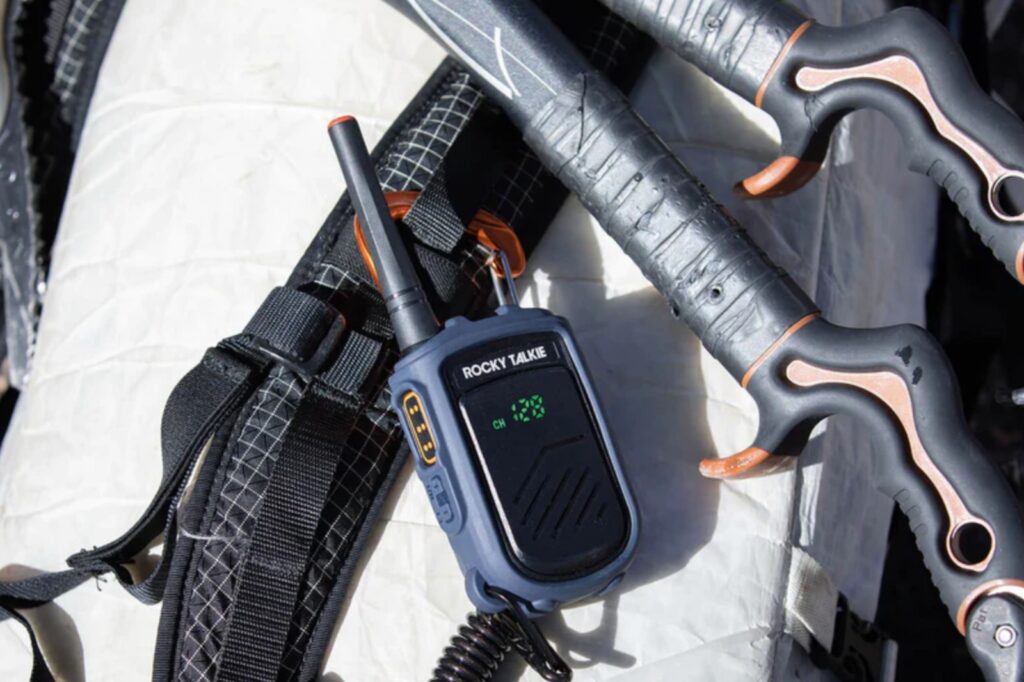
TAYLOR: Rocky Talkie is basically the Steph Curry of walkie-talkies. The Mountain Radios have a huge range for their class. These are 2-watt radios, which basically means they have higher power to bridge any obstructions between the radios. Rocky Talkie is also preparing to launch more expensive 5-watt radios, which should pack even more power. Either way, these aren’t the run-of-the-mill radios that you used on college road trips.
Even so, the range depends entirely on your terrain. Out on the plains with a clear line of sight, the Mountain Radio can reach up to 35 miles away. I haven’t been able to test that, but based on my other tests, I’m inclined to trust it.
My tests were in more mountainous and forested settings. Most of my excursions were going out from my home to the nearest trailheads and communicating back and forth with my family.
Here’s what I found as a result of my basic testing. When my family was indoors, I could consistently get around two miles away with clear communication. I could also push it to about two and a half miles before talking was crackly or diminished. If my family went outside, however, I could extend the range to about three or four miles depending on the direction and obstructions.
This falls right into the one to five miles of range that Rocky Talkie boasts for mountainous settings. If I were to use the Mountain Radio on a daily basis, this would be my usual scenario, and it would make perfect sense as most of my local trailheads fall into unreliable cell service territory.
I also used the Rocky Talkie Mountain Radio while directing a trail race. One volunteer had a radio about 1.25 miles away, across mountainous and thickly forested terrain, but my communication with them was consistent and clear even as they moved around from location to location. Because these types of radio waves travel in a line (and do not bend), it’s tougher to use the Rocky Talkie in a city with built-up infrastructure. I expect that dependable communication would fall to less than a mile due to the buildings, though the trade-off is that you’d get better cell service results.
Shop Rocky Talkie Mountain Radio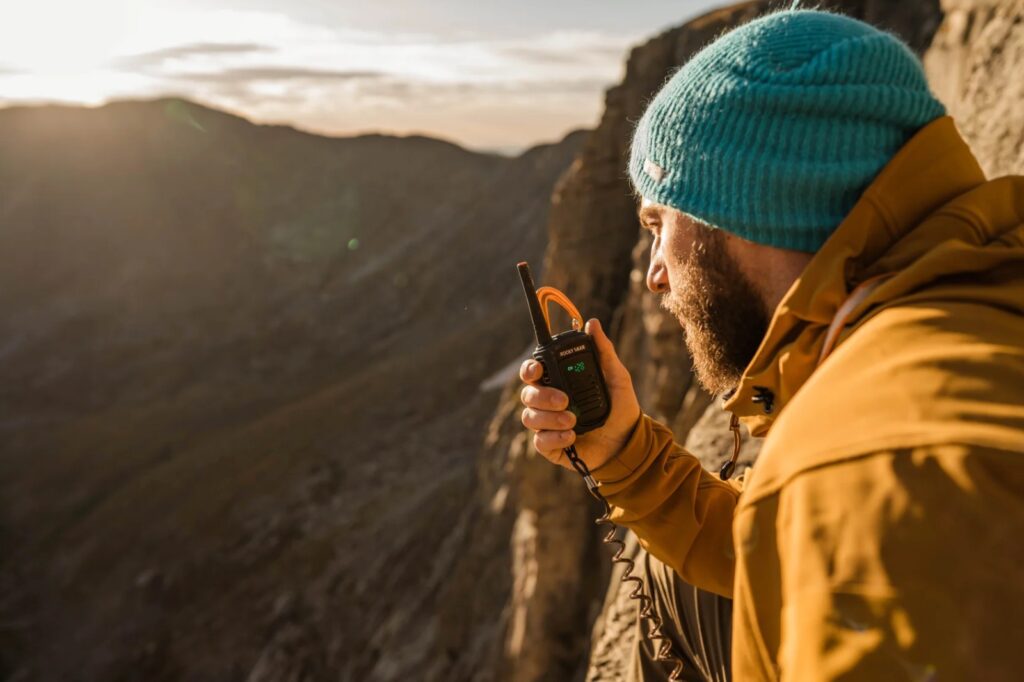
TAYLOR: As for controls, the Rocky Talkie Mountain Radio is everything you dreamed about as a young buck — totally tactile and easy to use.
A few simple buttons make communication easy. Large buttons like a top power button and a side call button are easy to see and use, even with thick gloves on. Surfing the 128 potential channels is straightforward, with a pair of channel buttons on the side. A lock switch on top holds your channel and volume controls.
Inside the tough shell, battery life is another no-compromise aspect of the Rocky Talkie Mountain Radio. It utilizes a 1550mAh Li-ion battery that’s rechargeable via USB-C. It can also be replaced while on the go, but a four-day battery life is definitely not out of the question. After a camping trip, I forgot to turn off the radios, but three days later, I woke up to some climbers chatting back and forth about the pitch they were on. Even though the radios were inactive for a few days, their battery lasted and had juice to spare.
With controls and battery life being no-brainers, it’s easy to have confidence in the usability of the Rocky Talkie Mountain radio.
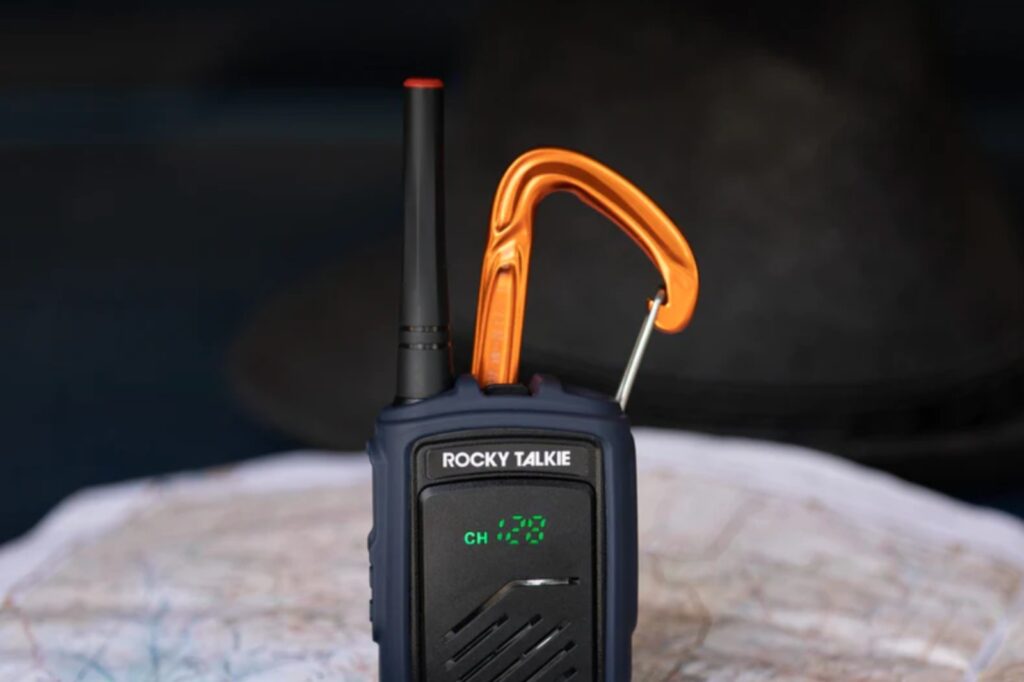
TAYLOR: Reviewing the Rocky Talkie Mountain Radio made me rethink my use of communication devices a little bit. For me, in a mountainous setting, I almost always bring my phone with me for runs. Most of the time, it’s a good enough safety measure. There are times, on a weekly basis, that I am fairly close to home yet can’t get service. Just like with car crashes, close to home is where I’ve had my worst running incidents. From that standpoint alone, I can see Rocky Talkies as a practical safeguard.
Fastpacking, big trail adventures, and FKT’ing with a crew would be other scenarios where I believe the Rocky Talkie Mountain Radio could be used — especially if there’s a group dynamic involved. Quick communication between groups on whereabouts and conditions can be invaluable for such situations. Again, it’s an easy safeguard to have a line of communication.
Any of these activities done solo in remote locations would warrant the use of some satellite-based subscription device, though.
There are a ton of other uses for the Rocky Talkie Mountain Radio. Many trail runners also take on other outdoor forays like skiing, rock climbing, hiking, camping, and who knows what else. I think these activities have a more upfront practical value for the Rocky Talkie Mountain Radio. Have you ever done a Ragnar Relay? Talking between vans to plan the next segments and beer runs would be easily done with this radio.
You can pick up the Rocky Talkie Mountain Radio for $110 from Rocky Talkie using the button below.
Have something to say? Leave a Comment

Taylor Bodin is a trail and ultra runner living in Estes Park, Colo., with his wife and daughters. As the head of the Dirt Division at Believe in the Run, trail running is pretty much the only hobby he can manage right now and loves it. Every so often, he will pop off a race or FKT attempt because competition is pure and the original motivator for him getting into running anyway.
More from Taylor
